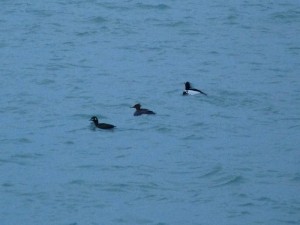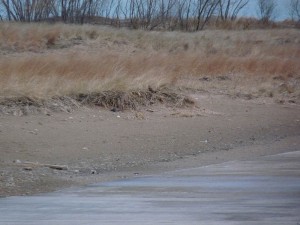I’m still in waterbird mode, which means I haven’t been paying much
attention to landbirds. This is just as well as the persistent east
winds have put a damper on passerine migration along the lakefront.
Yesterday and today, April 20, I had single Red-throated Loons flying
north past the Point. Yesterday’s bird looked like an adult in nearly
full breeding plumage. Not exactly what I want to see at this time of
the year but I’ll take them.
Other than the loons I saw little else of interest. Red-breasted
Mergansers are still around as are a few Horned Grebes. I had several
large flocks of Double-crested Cormorants winging north too.
Here’s to southwest winds.


